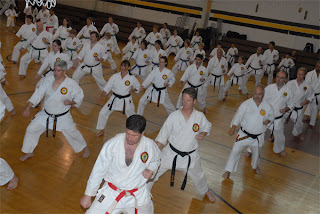

As our grandmothers knew (back in the 1950s and '60s), smoothing on a matching body cream underneath a favorite juice will increase its longevity, since moist skin holds perfume more efficiently. But that doesn't mean there's no room for creative tweaking: Additional elements can make them richer and more enduring, or even change their character completely. Most modern fragrances are constructed so that they essentially provide built-in layering: The top, middle, and base notes burn off in succession, like a slow reveal. People had to struggle to keep their noses out off their forearms for the rest of the day.


The result is gorgeous: warm, enigmatic, and surprisingly feminine. (People in Dubai smell fragrances with such a point of view, and they're very interested in every ingredient.) To demonstrate the ease with which Swiss Arabian's fragrances can be mixed and matched for a unique effect, we took the hand of those event participants and massaged in Musk Malaki, then sprayed Oud Maknoon - a best seller from our brand's unisex range, in which the spice is blended with blond wood, rose, incense, amber, and pink pepper - on top. During one of our events in Las Vegas, we demonstrated to participants that although Middle Eastern women tend to like their fragrances strong, and grounded in a musky or earthy note, they also enjoy playing with airier, more sparkling scents. Now almost every fragrance house has a scent spotlighting the note of oud.Ĭlearly one of oud's most appealing characteristics is its layerability-it enhances and boosts the staying power of other olfactive elements spectacularly-but successful scent combos by no means need to include it. Many of those brands thought that these new oud based released would region specific, but it was such a hit everywhere for them. After globe-trotting Emiratis in search of a modern effect began to add drops of oud extract to popular Western perfumes, savvy brands picked up on the oud trend and began to produce fragrances geared toward Middle Eastern consumers. Derived from a South Asian evergreen tree infected with a fungus that prompts the production of a pungent-smelling resin, oud (also known as agarwood) has been used in Arabia for centuries, sometimes providing the base for bakhoor (in which it is mixed with fragrance oils and sometimes frankincense and myrrh) and playing a starring role in the typical daily scent regimen (the pure oil is dabbed behind the ears and on pulse points). The influence of the modern Middle East has already shifted the course of perfumery: Just Ten years ago, for example, it's unlikely that even a particularly ardent Western fragrance fan would have heard of the now-ubiquitous oud. For someone who spritzes on scent only as a finishing touch on the way out the door, this is definably revelatory. And that's just a fraction of the scent they're actually wearing: Throughout the Arab world, both men and women approach fragrance ritualistically, layering on multiple oils, or attars (such as musk, oud, rose, or jasmine), and even infusing their clothing and hair with smoke from an incense like concoction called bakhoor before spraying on perfume. The Emiratis, along with their Persian Gulf neighbors in Kuwait, Saudi Arabia, Oman, Bahrain, and Qatar, are the biggest spenders per capita on luxury perfume in the world, purchasing, according to some sources, a new bottle every two months (compared with the average Westerner, who buys one every six months). This place, in short, is a fragrance freak's dream. The effect is similar to visiting the nearby spice souk, where the aromas rising from vats of frankincense, dried chamomile blossoms, saffron, cinnamon, and vanilla all blend together in the air like an olfactive fugue. And though one can detect some notes-jasmine, maybe? sandalwood? - each person seems to radiate a fragrance, or a combination of fragrances, unlike anything you typically encounter in the western world.

Simply walking behind groups of locals in the mall - which, because of the extreme heat outdoors (100-degree days are the norm), functions as the see-and-be-seen social center of life in Dubai - can be utterly intoxicating: the flutter of their robes (the traditional long black garment worn by women, the abaya, and the men's crisp white counterpart, the dishdasha) unleashes an opulent, beckoning trail of scent.
ARABIAN CONJURE SHOP HOW TO
What can the most fragrance-obsessed culture in the world teach us about new ways to wear scent? Take a literal journey through our blog to the Middle East and learn how to cast a seductive spell by mixing and matching perfumes.


 0 kommentar(er)
0 kommentar(er)
